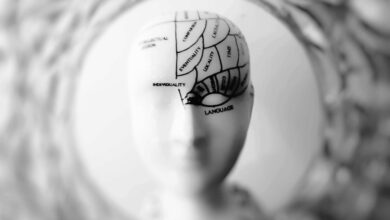Post-Traumatic Stress Disorder: Definition, Causes and Risk Factors

Post-Traumatic Stress Disorder. A lot of people have experienced trauma in their life. Most of the people defined trauma as a life-event that is very disturbing and distressing.
However, for mental health professionals, trauma or traumatic events is defined very specifically.
Trauma, as defined by APA (American Psychological Association), is an emotional response to a terrible event like an accident, sexual assault, or natural disaster. Immediately after the traumatic event, shock and denial are typical. Long-term reactions include unpredictable emotions, flashbacks, strained relationships, and even physical symptoms like headaches or nausea.
But how do we differentiate trauma from PTSD and what are its causes and risk factors?
Post-Traumatic Stress Disorder
According to the American Psychiatric Association, Post-traumatic stress disorder (PTSD) is a psychiatric disorder that can occur in people who have experienced or witnessed a traumatic event such as a natural disaster, a serious accident, a terrorist act, war/combat, rape, or other violent personal assault.
Examples of events that can
trigger PTSD include wars, crimes, fires, accidents, death of a loved one, or abuse of some form. Thoughts and memories recur even though the danger has passed.
It is thought to affect between 7 and 8 percent of the population, and women are more likely to be affected than men.
Post-traumatic stress disorder can happen to a person after experiencing a traumatic event that has caused them to feel fearful, shocked, or helpless. It can have long-term effects, including flashbacks, difficulty sleeping, and anxiety.
PTSD is also associated with stroke. A recent study suggests that Post-Traumatic Stress Disorder is associated with a significant increase in the risk of early incident transient ischemic attack (TIA) and ischemic stroke independent of established stroke risk factors, coexisting psychiatric disorders, and healthcare utilization.
PTSD is under the Trauma and Stressor-Related Disorders of the Diagnostic and Statistical Manual of Mental Disorders 5th Edition (DSM – V). According to the DSM V, Post-Traumatic Stress Disorder triggers are the following types of traumatic events:
- Exposure to actual or threatened death
- Serious injury
- Sexual violation
Furthermore, the exposure must result from one or more of the following situations, in which the individual:
- Directly experiences the traumatic event
- Witnesses the traumatic event in person
- Learns that the traumatic event occurred to a close family member or close friend (with the actual or threatened death being either violent or accidental)
- Experiences first-hand, repeated, or extreme exposure to aversive (unpleasant) details of the traumatic event (does not learn about it through media, pictures, television, or movies, except for work-related events)
Symptoms of PTSD include:
- Unwanted upsetting memories
- Nightmares
- Flashbacks
- Emotional distress after exposure to traumatic reminders
- Physical reactivity after exposure to traumatic reminders
- Avoidance of trauma-related stimuli after the trauma
- Inability to recall key features of the trauma
- Overly negative thoughts and assumptions about oneself or the world
- Exaggerated blame of self or others for causing the trauma
- Negative affect
- Decreased interest in activities
- Feeling isolated
- Difficulty experiencing positive affect
- Irritability or aggression
- Risky or destructive behavior
- Hypervigilance
- Heightened startle reaction
- Difficulty concentrating
- Difficulty sleeping
A person should be diagnosed with Post-Traumatic Stress Disorder if the symptoms last for more than 1 month and can create distress or functional impairment (e.g., social, occupational). Symptoms should not be due to medication, substance use, or other illness.
Causes and Risk Factors
As said earlier, PTSD can develop after a traumatic event such as wars, natural disasters, loss of a loved one, etc. however, Not everyone who experiences a traumatic event will develop PTSD. While it remains unclear why some people develop this and others do not, some risk factors may increase the chance of developing symptoms of PTSD.
Previous Traumatic Experiences
People who have experienced previous trauma, such as rape, car accident, disaster, or act of violence, are more susceptible to PTSD. This is especially true for those with early and longer-lasting childhood trauma because a new traumatic experience can exacerbate the negative effects of previous trauma.
This is the same with people with a history of physical, emotional, or sexual abuse. Such experiences contributed to previous trauma and their effects may be reinforced by any additional trauma.
Family History of PTSD or Depression
People who have a family history of Post-Traumatic Stress Disorder or Depression can also be at a higher risk of developing it. This is because PTSD and Depression are highly comorbid with each other and are common for the people experiencing it.
It has been observed that 30-50 percent of individuals with PTSD meet the criteria for the diagnosis of clinical depression.
In a survey conducted by the National Survey of Adolescents, they found that people who are both experiencing/witnessing violence and a family history of substance abuse, mental health problems, or depression could put an adolescent at risk of PTSD or depression.
Lack of Support
Social support is a key risk factor in the development, maintenance, and treatment of PTSD. There are several explanations regarding social support as a key risk factor in PTSD. If an individual lack social support, this can lead to an increase in psychological distress following a traumatic experience.
In a recent study regarding PTSD and social support, researchers found that individuals with more ‘complex’ presentations of PTSD showed lower levels of perceived social support. It was also found that lower perceived social support was uniquely associated with a likelihood of presenting with a complex-PTSD diagnosis, compared with it and without.
Stress
Stress is one of the major risk factors in developing PTSD. If an individual is living a very stressful life, he can develop it once he experiences a traumatic event.
When we are stressed, our body sends out stress signals, which can lead to PTSD symptoms. Studies show that the part of the brain that handles fear and emotion (the amygdala) is more active in people with Post-Traumatic Stress Disorder. Over time, this disability changes our brain. The area that controls our memory (the hippocampus) becomes smaller the reason why most people don’t remember the traumatic event they experience.
Stress can not only affect our mental health but also our physical health. Being in continuous and extreme stress can result in extensive physical and psychological problems which can reduce the ability to cope with trauma leading to a higher risk of PTSD disability.
If you are someone suffering from Post-Traumatic Stress Disorder kindly seek guidance from a licensed therapist to help calm you down and be able to get past and be cured of it.
This concludes the topic of Post-Traumatic Stress Disorder.
Read Also: Health And Glow | Fast facts on health and glow



